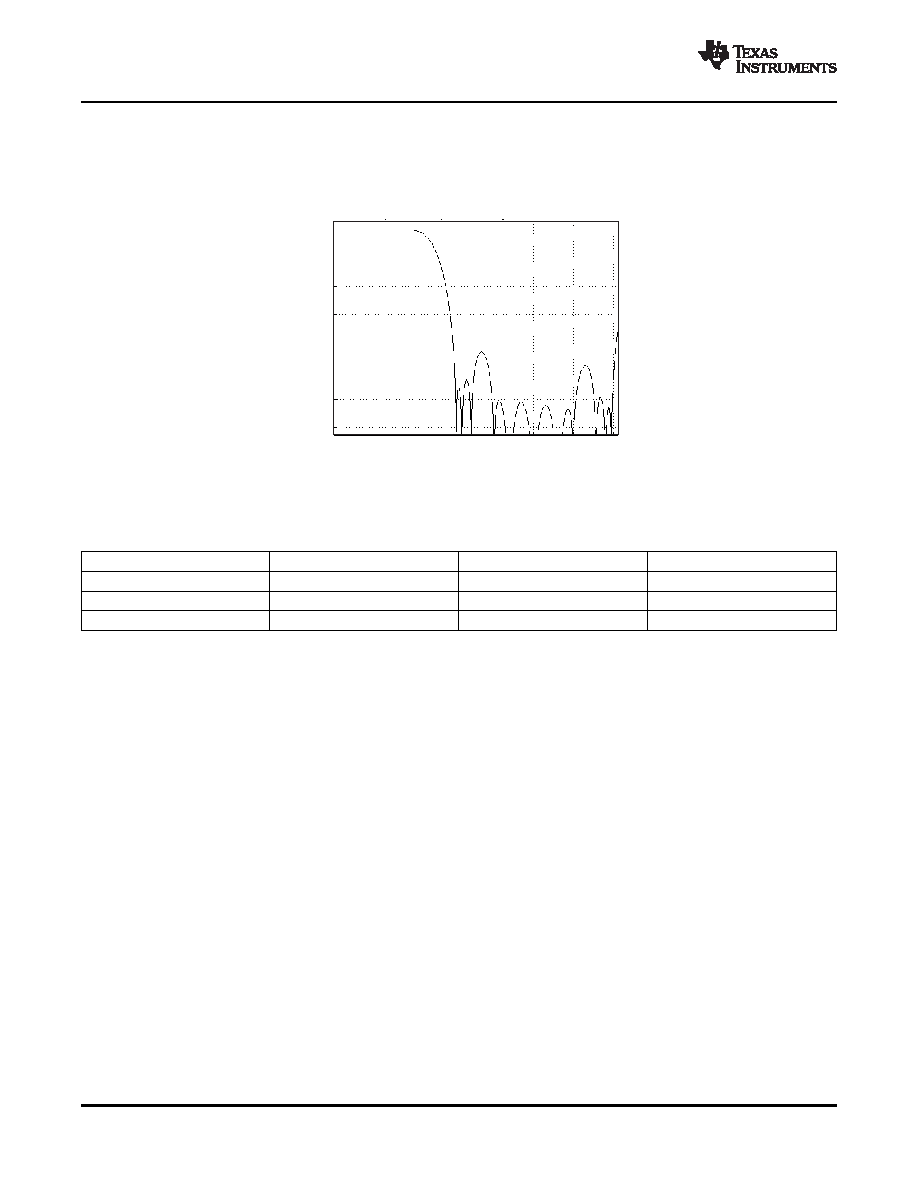- 您現(xiàn)在的位置:買賣IC網(wǎng) > PDF目錄98302 > TSC2117IRGZR (TEXAS INSTRUMENTS INC) SPECIALTY CONSUMER CIRCUIT, QCC48 PDF資料下載
參數(shù)資料
| 型號(hào): | TSC2117IRGZR |
| 廠商: | TEXAS INSTRUMENTS INC |
| 元件分類: | 消費(fèi)家電 |
| 英文描述: | SPECIALTY CONSUMER CIRCUIT, QCC48 |
| 封裝: | 7 X 7 MM, GREEN, PLASTIC, VQFN-48 |
| 文件頁(yè)數(shù): | 141/192頁(yè) |
| 文件大小: | 2728K |
| 代理商: | TSC2117IRGZR |
第1頁(yè)第2頁(yè)第3頁(yè)第4頁(yè)第5頁(yè)第6頁(yè)第7頁(yè)第8頁(yè)第9頁(yè)第10頁(yè)第11頁(yè)第12頁(yè)第13頁(yè)第14頁(yè)第15頁(yè)第16頁(yè)第17頁(yè)第18頁(yè)第19頁(yè)第20頁(yè)第21頁(yè)第22頁(yè)第23頁(yè)第24頁(yè)第25頁(yè)第26頁(yè)第27頁(yè)第28頁(yè)第29頁(yè)第30頁(yè)第31頁(yè)第32頁(yè)第33頁(yè)第34頁(yè)第35頁(yè)第36頁(yè)第37頁(yè)第38頁(yè)第39頁(yè)第40頁(yè)第41頁(yè)第42頁(yè)第43頁(yè)第44頁(yè)第45頁(yè)第46頁(yè)第47頁(yè)第48頁(yè)第49頁(yè)第50頁(yè)第51頁(yè)第52頁(yè)第53頁(yè)第54頁(yè)第55頁(yè)第56頁(yè)第57頁(yè)第58頁(yè)第59頁(yè)第60頁(yè)第61頁(yè)第62頁(yè)第63頁(yè)第64頁(yè)第65頁(yè)第66頁(yè)第67頁(yè)第68頁(yè)第69頁(yè)第70頁(yè)第71頁(yè)第72頁(yè)第73頁(yè)第74頁(yè)第75頁(yè)第76頁(yè)第77頁(yè)第78頁(yè)第79頁(yè)第80頁(yè)第81頁(yè)第82頁(yè)第83頁(yè)第84頁(yè)第85頁(yè)第86頁(yè)第87頁(yè)第88頁(yè)第89頁(yè)第90頁(yè)第91頁(yè)第92頁(yè)第93頁(yè)第94頁(yè)第95頁(yè)第96頁(yè)第97頁(yè)第98頁(yè)第99頁(yè)第100頁(yè)第101頁(yè)第102頁(yè)第103頁(yè)第104頁(yè)第105頁(yè)第106頁(yè)第107頁(yè)第108頁(yè)第109頁(yè)第110頁(yè)第111頁(yè)第112頁(yè)第113頁(yè)第114頁(yè)第115頁(yè)第116頁(yè)第117頁(yè)第118頁(yè)第119頁(yè)第120頁(yè)第121頁(yè)第122頁(yè)第123頁(yè)第124頁(yè)第125頁(yè)第126頁(yè)第127頁(yè)第128頁(yè)第129頁(yè)第130頁(yè)第131頁(yè)第132頁(yè)第133頁(yè)第134頁(yè)第135頁(yè)第136頁(yè)第137頁(yè)第138頁(yè)第139頁(yè)第140頁(yè)當(dāng)前第141頁(yè)第142頁(yè)第143頁(yè)第144頁(yè)第145頁(yè)第146頁(yè)第147頁(yè)第148頁(yè)第149頁(yè)第150頁(yè)第151頁(yè)第152頁(yè)第153頁(yè)第154頁(yè)第155頁(yè)第156頁(yè)第157頁(yè)第158頁(yè)第159頁(yè)第160頁(yè)第161頁(yè)第162頁(yè)第163頁(yè)第164頁(yè)第165頁(yè)第166頁(yè)第167頁(yè)第168頁(yè)第169頁(yè)第170頁(yè)第171頁(yè)第172頁(yè)第173頁(yè)第174頁(yè)第175頁(yè)第176頁(yè)第177頁(yè)第178頁(yè)第179頁(yè)第180頁(yè)第181頁(yè)第182頁(yè)第183頁(yè)第184頁(yè)第185頁(yè)第186頁(yè)第187頁(yè)第188頁(yè)第189頁(yè)第190頁(yè)第191頁(yè)第192頁(yè)

0
-10
-20
-30
-40
-50
-60
-70
Magnitude-dB
0
0.2
0.4
0.6
0.8
1
1.2
1.4
FrequencyNormalizedw.r.t.FS
DACChannelResponseforInterpolationFilterC
(Redlinecorrespondsto-43dB)
5.6.2
DAC Digital-Volume Control
TSC2117
Low-Power Audio Codec With Embedded miniDSP, Stereo Class-D
Speaker Amplifier, and Smart Four-Wire Touch-Screen Controller
SLAS550A – APRIL 2009 – REVISED JUNE 2009
www.ti.com
5.6.1.4.3 Interpolation Filter C
Filter C is specifically designed for the 192-ksps mode. The pass band extends up to 0.4
× f
S (corresponds
to 80 kHz), more than sufficient for audio applications.
Figure 5-32. Frequency Response of DAC Interpolation Filter C
Table 5-30. Specification for DAC Interpolation Filter C
Parameter
Condition
Value (Typical)
Unit
Filter-gain pass band
0
… 0.35 f
S
±0.03
dB
Filter-gain stop band
0.6 fS … 1.4 fS
–43
dB
Filter group delay
13/fS
s
The DAC has a digital-volume control block which implements programmable gain. Each channel has an
independent volume control that can be varied from 24 dB to –63.5 dB in 0.5-dB steps. The left-channel
DAC volume can be controlled by writing to page 0/register 65, bits D7–D0. The right-channel DAC
volume can be controlled by writing to page 0/register 66, bits D7–D0. DAC muting and setting up a
master gain control to control both channels is done by writing to page 0/register 64, bits D3–D0. The gain
is implemented with a soft-stepping algorithm, which only changes the actual volume by 0.125 dB per
input sample, either up or down, until the desired volume is reached. The rate of soft-stepping can be
slowed to one step per two input samples by writing to page 0/register 63, bits D1–D0. Note that the
default source for volume-control level settings is control by register writes (page 0/registers 65 and 66 to
control volume). Use of the VOL/MICDET pin to control the DAC volume is ignored until the volume
control source selected has been changed to pin control (page 0/register 116, bit D7 = 1). This
functionality is shown in Figure 1-1.
During soft-stepping, the host does not receive a signal when the DAC has been completely muted. This
may be important if the host must mute the DAC before making a significant change, such as changing
sample rates. In order to help with this situation, the device provides a flag back to the host via a
read-only register, page 0/register 38, bit D4 for the left channel and bit D0 for the right channel. This
information alerts the host when the part has completed the soft-stepping, and the actual volume has
reached the desired volume level. The soft-stepping feature can be disabled by writing to
page 0/register 63, bits D1–D0.
APPLICATION INFORMATION
52
相關(guān)PDF資料 |
PDF描述 |
|---|---|
| TSC2117IRGZT | SPECIALTY CONSUMER CIRCUIT, QCC48 |
| TSC2300IPAGG4 | SPECIALTY CONSUMER CIRCUIT, PQFP64 |
| TSC2300IPAGR | SPECIALTY CONSUMER CIRCUIT, PQFP64 |
| TSC2300IPAG | SPECIALTY CONSUMER CIRCUIT, PQFP64 |
| TSC2300IPAGRG4 | SPECIALTY CONSUMER CIRCUIT, PQFP64 |
相關(guān)代理商/技術(shù)參數(shù) |
參數(shù)描述 |
|---|---|
| TSC2117IRGZT | 功能描述:觸摸屏轉(zhuǎn)換器和控制器 4-Wire Touch Screen Controller RoHS:否 制造商:Microchip Technology 類型:Resistive Touch Controllers 輸入類型:3 Key 數(shù)據(jù)速率:140 SPS 分辨率:10 bit 接口類型:4-Wire, 5-Wire, 8-Wire, I2C, SPI 電源電壓:2.5 V to 5.25 V 電源電流:17 mA 工作溫度:- 40 C to + 85 C 封裝 / 箱體:SSOP-20 |
| TSC2117IRGZT | 制造商:Texas Instruments 功能描述:Touch Screen Controller IC |
| TSC22 | 制造商:未知廠家 制造商全稱:未知廠家 功能描述:EURO TERMINAL BLOCKS |
| TSC2200 | 制造商:BB 制造商全稱:BB 功能描述:PDA ANALOG INTERFACE CIRCUIT |
| TSC2200EVM | 功能描述:觸摸傳感器開(kāi)發(fā)工具 Touch Screen Contr Eval Mod RoHS:否 制造商:Cypress Semiconductor 工具用于評(píng)估: 接口類型: 工作電壓: 最大工作溫度: |
發(fā)布緊急采購(gòu),3分鐘左右您將得到回復(fù)。